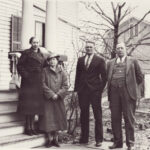The Scottish Fold cat, instantly recognizable for its charmingly folded ears, possesses an endearing appearance that has captured hearts worldwide. These felines are not only visually appealing but also known for their affectionate and docile nature, making them wonderful companions. However, the very genetic mutation that gives them their signature look also raises significant health concerns, sparking ethical debates around their breeding. This article delves into the captivating world of the British Fold Cat, providing comprehensive information about their history, characteristics, temperament, care, and the ongoing discussions about their well-being.
Fun Fact:
Pop icon Taylor Swift adores Scottish Folds! Her beloved pets, Detective Olivia Benson and Doctor Meredith Grey, frequently grace her social media, showcasing their adorable charm to millions.
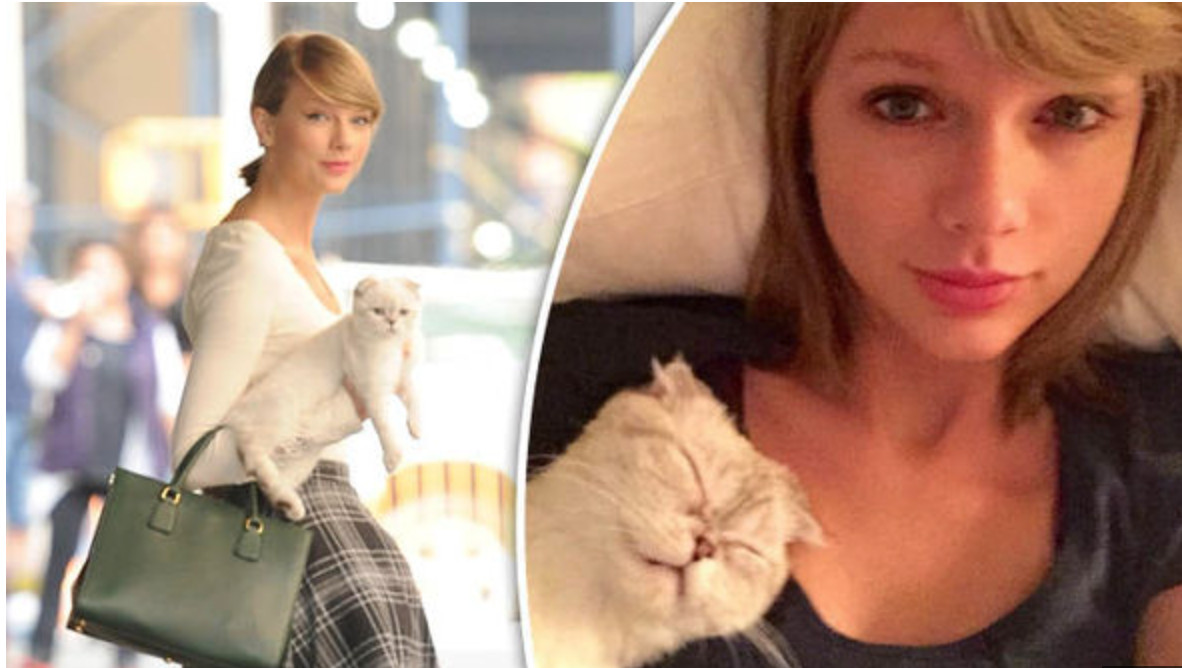 Taylor Swift's Scottish Fold Cats
Taylor Swift's Scottish Fold Cats
Learn more about Taylor Swift’s feline companions here.
British Fold Cat: Quick Breed Facts
- Lifespan: Typically 12 to 14 years
- Weight: Ranges from 6 to 13 pounds on average
- Length: Approximately 10 to 12 inches (excluding tail)
- Height: Stands at 8.5 to 10 inches tall
- Adorableness Factor: Undeniably high! (While subjective, their cuteness is widely acknowledged)
The Origins of the British Fold: A Scottish Tale
As the name suggests, the British Fold cat’s story begins in Scotland. Specifically, in 1961, a shepherd named William Ross noticed an unusual white farm cat named Susie near Coupar Angus in the Tayside region. Susie stood out from other cats due to her distinctively folded ears, a trait that would soon define a breed. Remarkably, every British Fold cat today can trace its lineage back to this single, remarkable feline ancestor.
Intrigued by Susie’s unique feature, William Ross learned that she had kittens. He acquired one of her offspring, a white kitten named Snooks, mirroring her mother’s coat color, and embarked on establishing a new cat breed.
Susie carried a spontaneous genetic mutation responsible for her folded ears, a trait she passed on to some of her kittens. While not all kittens in a litter inherited the folded ears, they could still carry the gene.
In 1966, William Ross officially registered the Scottish Fold breed with the Governing Council of the Cat Fancy in the UK. He collaborated with geneticist Pat Turner, who determined that the ear mutation was caused by a dominant gene. Their breeding program proved successful, producing 76 kittens within the first three years, with 42 exhibiting folded ears and 34 with straight ears.
Tragically, Susie, the founding mother of the breed, was killed by a car just three months after her first and only litter. Despite her short life, Susie remains an iconic figure for British Fold enthusiasts, forever remembered as the origin of this beloved breed.
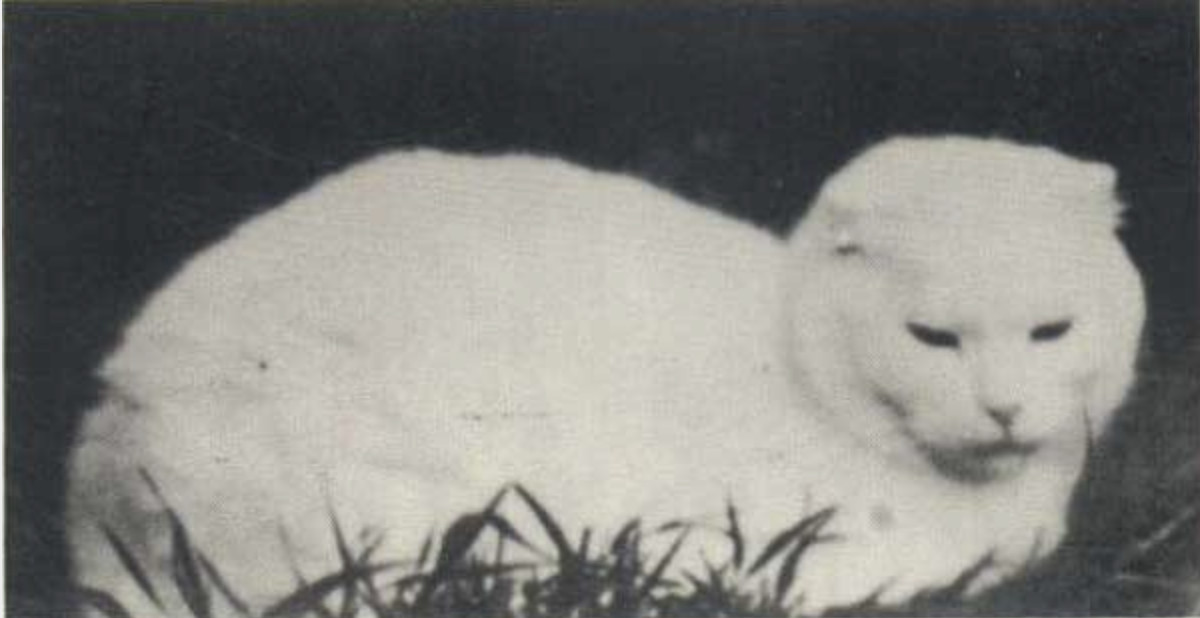 Susie, the Original Scottish Fold Cat
Susie, the Original Scottish Fold Cat
Historical accounts mention folded-ear cats in China as far back as 1796, described in the Universal Magazine of Knowledge and Pleasure. This has led to speculation about a possible Oriental ancestry for the British Fold. However, whether there’s a connection to these ancient cats or if Susie’s mutation was entirely spontaneous remains a mystery. Regardless, Susie is recognized as the definitive starting point for the breed as we know it today.
Did You Know?
For a brief period, these cats were known as “lop-eared cats” before officially being named Scottish Fold, a name that reflects their origin and defining characteristic.
Identifying a British Fold Cat: Key Characteristics
The British Fold is considered a relatively rare cat breed, originating from a genetic mutation in the 1960s. They are celebrated for their rounded features – round faces, rounded bodies, and most notably, their uniquely folded ears, often likened to an “owl-like” appearance. Their coat colors are diverse, ranging from pure white to deep black and every shade in between, with various patterns and solid colors. The long-haired variant of the British Fold is known as the Highland Fold, showcasing the same charming folded ears with a luxurious, longer coat.
The Distinctive Folded Ears
Interesting Fact:
British Fold kittens are actually born with straight ears. The signature fold only begins to appear between 18 and 24 days of age, and even then, only if the kitten possesses the specific gene. Typically, only about half of a litter will inherit the gene and develop folded ears.
British Fold ears exhibit varying degrees of folding: single, double, or triple. A single fold involves just the ear tip folding downwards, a double fold sees half the ear folded, and a triple fold results in the entire ear lying flat against the head. In cat shows where the breed is recognized, a triple-folded ear is generally considered the ideal show standard.
Despite their folded shape, British Fold cats retain full ear functionality. They can swivel their ears to pinpoint sounds, flatten them in annoyance, and perk them up with curiosity, especially when the sound of treat bag crinkling fills the air!
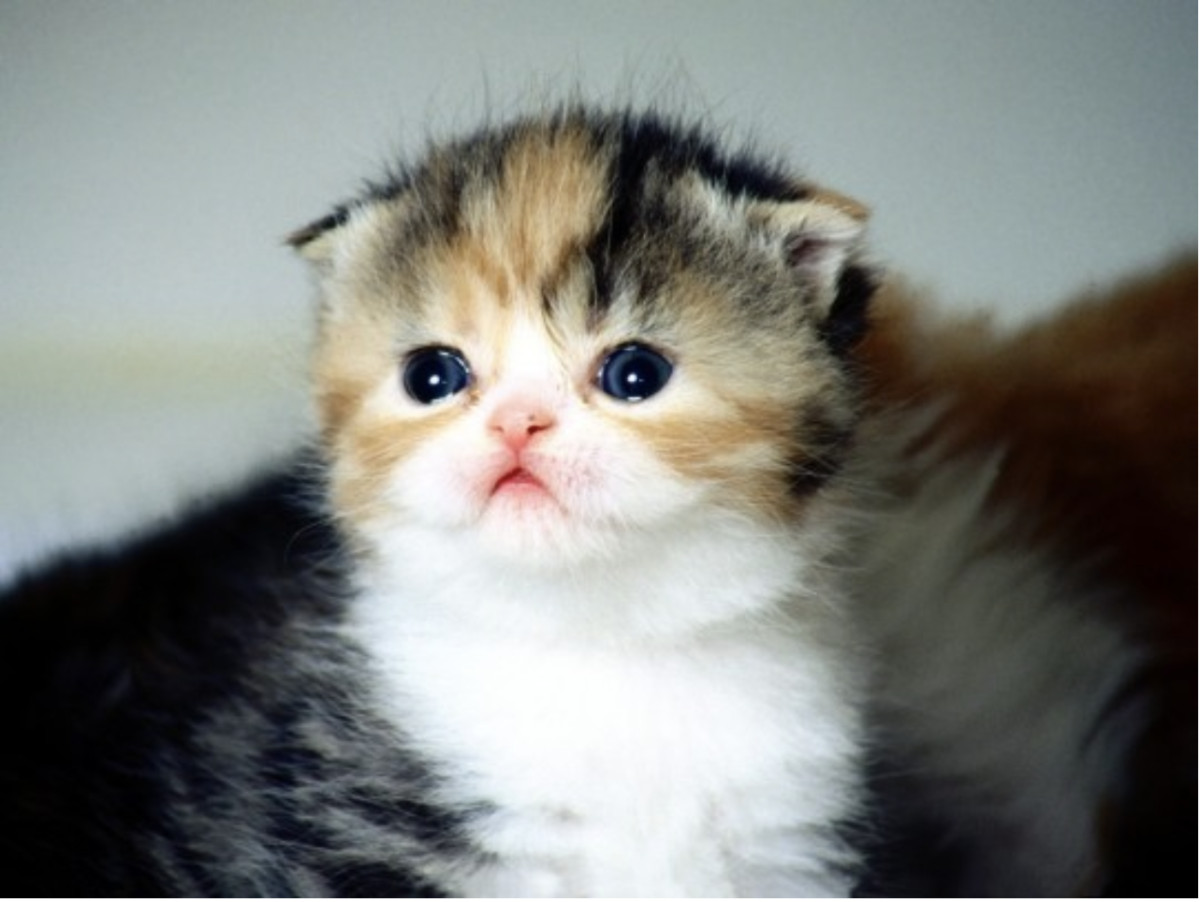 British Fold Cat Ears
British Fold Cat Ears
Rounded Body Structure
British Folds are classified as medium-sized cats, but their defining physical trait is their roundedness. This breed boasts a rounded physique overall, particularly in their head and face. Their eyes are large, round, and set wide apart, further enhancing their gentle expression. They have short necks, a short nose, and often appear slightly stout or “padded” around the middle, contributing to their cuddly appeal.
Coat Varieties and Colors
British Fold cats come in both short and long-haired coat types. Even the short-haired variety possesses a surprisingly dense and plush coat that feels full to the touch. The long-haired British Folds, known as Highland Folds, sport a more luxurious coat, with feathering on the tail, paws, and ears, and a particularly prominent ruff around their neck. The fur may be shorter around their face.
Due to health concerns associated with breeding two Fold cats together, British Folds have been crossbred with British and American Shorthair cats for several generations. This outcrossing has resulted in a wide spectrum of coat colors and patterns. However, in the United States, British Folds exhibiting Siamese-type points or chocolate and lilac fur are not eligible for showing.
Are British Fold Cats Hypoallergenic?
Unfortunately for allergy sufferers, British Fold cats are not hypoallergenic. If you have cat allergies or sensitivities, choosing a British Fold kitten might not be ideal, no matter how tempting their adorable faces are. They will likely trigger allergy symptoms.
British Fold vs. British Shorthair: Spotting the Differences
While British Fold and British Shorthair cats share some visual similarities, there are key distinctions between these two breeds.
Beyond the signature folded ears of the British Fold, British Shorthairs tend to be larger and more robust in build. And, of course, British Shorthairs lack the defining folded ears of the British Fold!
Coat texture also differs. British Shorthairs have a dense, short coat that requires regular brushing, typically once a week. British Folds, with their varying coat lengths, may need more or less frequent brushing depending on whether they are short or long-haired.
In terms of activity levels, both breeds are relatively laid-back, preferring naps to high-energy play. However, British Folds are generally considered more affectionate and people-oriented, while British Shorthairs tend to be more independent and self-sufficient.
British Fold Temperament: Affectionate and Gentle
British Fold cats are renowned for their friendly and loving personalities towards their human families. They thrive on attention and often enjoy following their owners around the house. However, prolonged periods of solitude can lead to boredom and potentially destructive behavior. British Folds are known to be quite expressive and will certainly communicate their needs and feelings.
They are typically quiet and calm cats, unless they are seeking attention or feeling distressed. When they want something, they will voice their needs with soft meows. While not as vocal as some breeds, they are known for producing a diverse range of vocalizations. British Folds are natural climbers and enjoy elevated perches. Despite a tendency towards being somewhat lazy, they still require regular exercise and stimulation. Above all, they are playful and enjoy having fun.
Interestingly, British Fold cats often form a particularly strong bond with one person in the household, similar to how dogs often choose a favorite person. While they will readily accept affection from other family members, their primary loyalty and attachment usually become quite evident.
Understanding British Fold Emotions: Decoding Feline Body Language
British Folds, like many cats, express affection through kneading – gently pushing their paws into you with retracted claws, a comforting sign of contentment.
Beyond kneading, understanding British Fold emotions involves recognizing general feline body language cues. Half-closed eyes signal relaxation and happiness. Wide eyes with dilated pupils might indicate excitement or potential pouncing. Narrowed eyes can suggest displeasure, so it’s best to avoid cuddles at that moment to prevent scratches.
A wagging tail in a cat, unlike in dogs, signifies agitation or unhappiness. An arched back is also a negative sign, indicating fear or aggression. Learning to interpret these subtle shifts in feline body language will enhance your understanding of your British Fold’s emotional state.
Amazing Record:
Maru, a British Fold cat from Japan, achieved Guinness World Record fame as the most-viewed animal on YouTube, amassing over 325 million views!
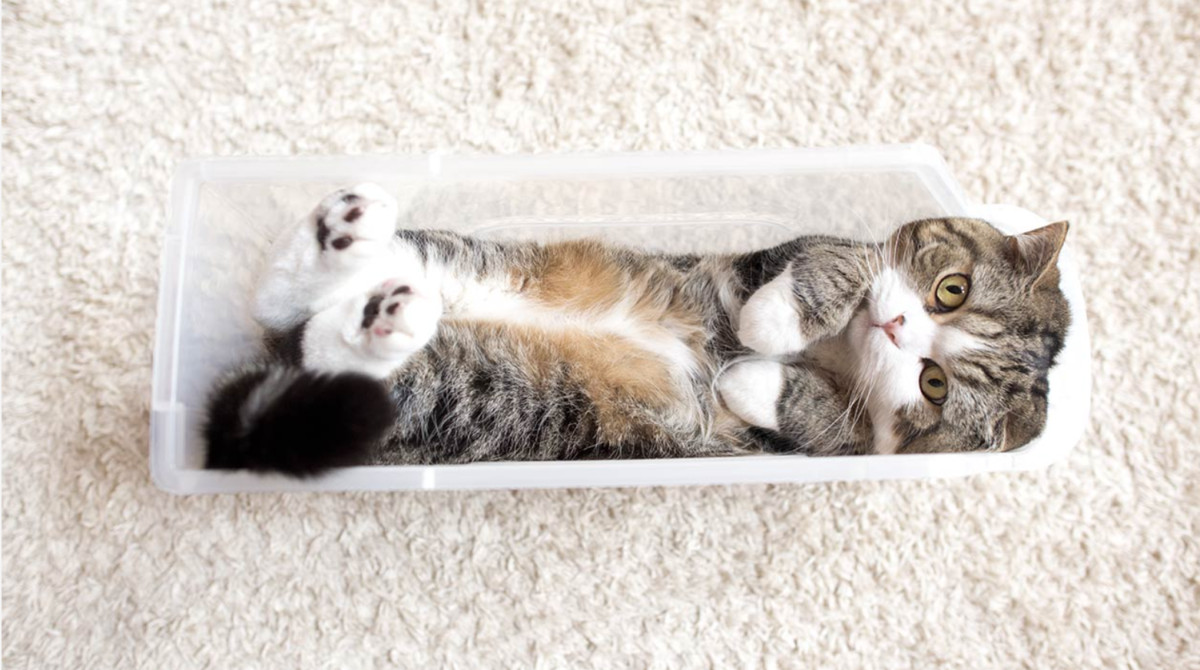 Maru the Scottish Fold Cat
Maru the Scottish Fold Cat
British Fold Habits: Quirks and Preferences
British Fold cats generally enjoy being outdoors and appreciate outdoor activities and stimulating play.
They are known for their independent streak and dislike being left alone for extended periods. Loneliness can affect them deeply, and they may even exhibit signs of depression if isolated.
British Folds are also famous for their peculiar postures, contorting their bodies into unusual positions, including sleeping on their backs. They are also known for sitting upright in a distinctive “Buddha position,” with legs extended and paws resting on their belly, as shown in the image below.
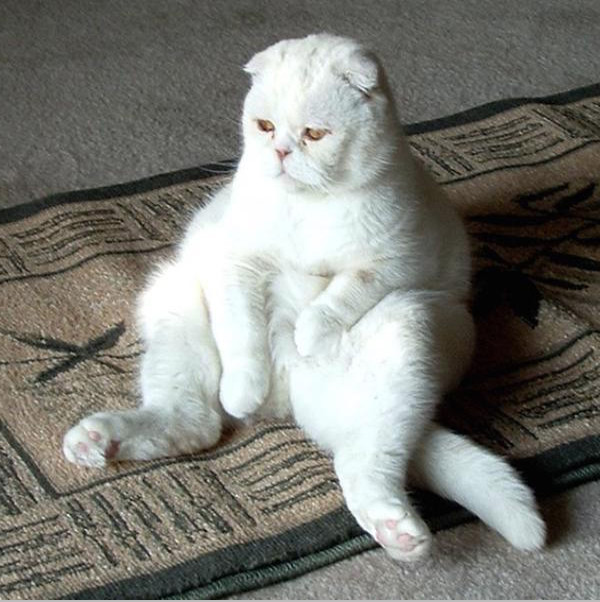 British Fold Cat Sitting in Buddha Position
British Fold Cat Sitting in Buddha Position
Grooming Your British Fold: Essential Care Tips
- Short-haired British Folds: Require weekly grooming to maintain a clean and glossy coat.
- Highland Folds (Long-haired): Need combing at least twice a week to prevent matting and tangles in their longer fur.
- Nail Trimming: Regular nail trims, typically weekly, are necessary, frequency may depend on whether your cat is primarily indoors or has outdoor access.
- Ear Cleaning: Due to their folded ears, weekly ear checks and cleaning are crucial to prevent wax buildup and potential infections.
- Dental Care: Many British Fold owners brush their cat’s teeth regularly with vet-approved pet toothpaste to promote good oral hygiene and fresh breath.
It’s beneficial to establish nail trimming and tooth brushing routines early in kittenhood to acclimate your British Fold to these procedures. Introducing a toothbrush to an older cat unfamiliar with it may result in scratches!
British Fold Health and Nutrition: Prioritizing Well-being
These adorable cats with folded ears have specific health concerns linked to the same genetic mutation that gives them their signature look. The weakened cartilage in their ears, causing the fold, also affects cartilage in their joints.
Therefore, a diet rich in protein and low in carbohydrates is crucial for British Folds. This nutritional approach supports joint health and helps prevent excessive weight gain, a potential risk given their tendency towards a less active lifestyle.
British Fold Digestive System: Understanding Dietary Needs
Despite their domesticated appearance, British Folds retain a digestive system similar to their wildcat ancestors. They have sensitive stomachs and can react negatively to high carbohydrate content in their diet. Their ideal diet should primarily consist of meat, cartilage, and bones, mirroring their natural prey.
Should British Fold Breeding Be Banned? The Ethical Debate
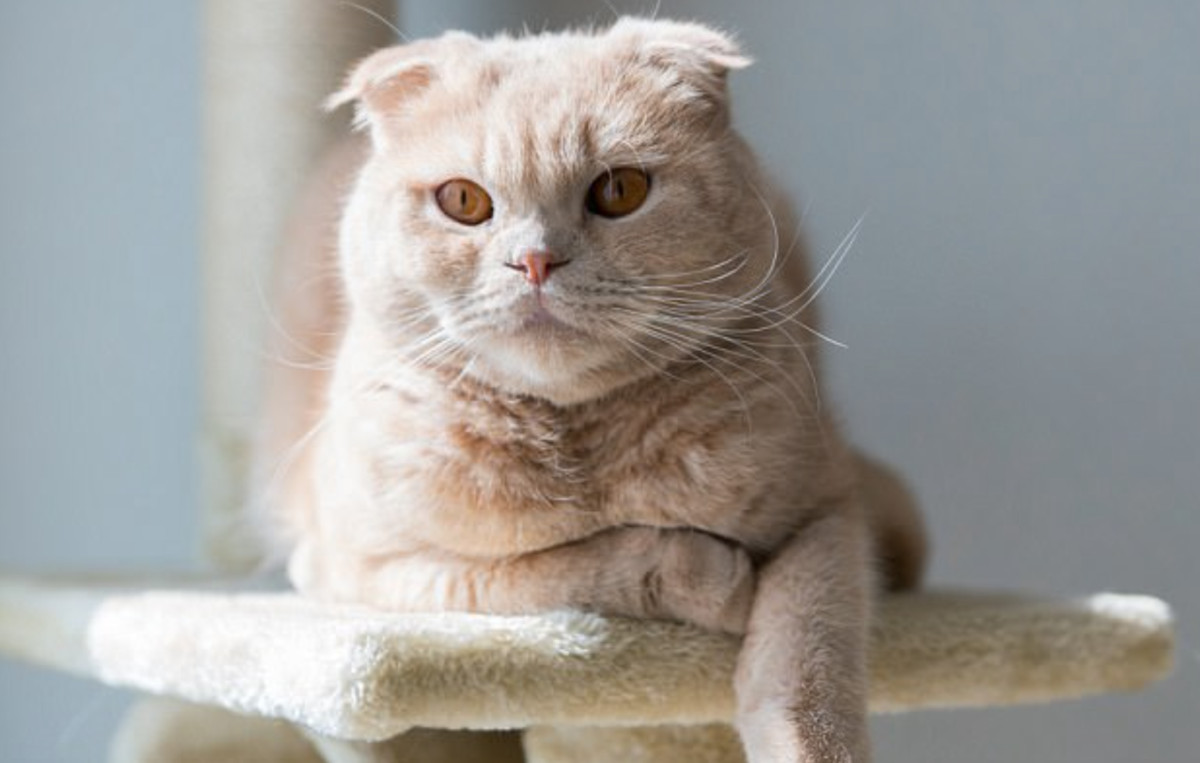 British Fold Cat Health Concerns
British Fold Cat Health Concerns
The very genetic mutation that makes British Folds so endearing can also lead to significant health issues, prompting animal welfare advocates to call for a ban on their breeding.
Gudrun Ravetz, president of the British Veterinary Association, highlights the ethical dilemma: “People want these cats because of their popularity with celebrities and on social media. Unfortunately, this is another example of prioritizing a pet’s appearance over their quality of life.”
She explains, “The cartilage is deformed, not just in the ears, but throughout their bodies. These genetic mutations, present in all British Fold cats, inevitably lead to lifelong, incurable, and painful diseases, such as a severe form of arthritis known as osteochondrodysplasia.”
The Governing Council of the Cat Fancy in the UK stopped registering British Folds in the early 1970s due to concerns about ear disorders and associated hearing problems. While their popularity waned in the UK initially, they gained traction and popularity in the United States.
Proponents of continued breeding argue that responsible breeders mitigate health risks by outcrossing British Folds with breeds like American or British Shorthairs, claiming this reduces the likelihood of congenital health problems.
However, Ms. Ravetz refutes this claim: “All cats with the folded ear appearance carry the genetic mutation. The onset and severity of the disease may vary, but to some degree, they will all develop this incurable, painful, and lifelong condition. We should not be breeding pets predisposed to such problems.”
Currently, there is no breeding ban on British Fold cats or general restrictions on cat breeding in the UK, but the Scottish government has indicated it is considering a ban on the breed. The veterinary industry journal Vet Record has also announced a review of featuring British Fold cats in their advertisements, reflecting growing ethical concerns within the veterinary community.
Origami Cat Fun
Feeling creative? Try making this origami cat! You can even fold the ears down to mimic a British Fold. 🙂

